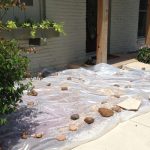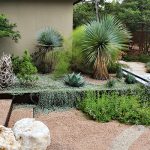Although we can’t control the weather, we can do other things to reduce the chances of lawn disease — now and in the future.
San Antonio lawns frequently fall prey to avaricious grass fungi that often don’t display the results of their malevolent activity until later in the year.
Although we can’t control the weather, we can do several things to reduce the chances of lawn disease now and in the future.
Sunlight Requirement
A brief note on the placement of particular species of grass: Bermuda grass requires 10 or more hours of direct sunlight, zoysia requires eight or more hours of direct sunlight and St. Augustine grass requires six or more hours of direct sunlight. If the amount of direct sunlight is not met, then decline and pest problems will occur.
Reasons for Disease
Most grass fungi prefer cool, wet weather. Therefore, most fungi are active during the fall, winter and spring seasonal rains. However, the symptoms may not become obvious until the summer. Well-meaning, but excessive irrigation will also promote fungi. Generally we ask homeowners what the watering schedule is during the dormant seasons — fall, winter and early spring. If the answer is more than once a week, then disease will occur. If a smart controller (uses weather data as a basis for scheduling) is in use, then the Seasonal Adjust should not exceed 20 percent during the dormant season or else disease is likely to occur.
The second encouragement for grass fungi is excessive nitrogen. If a homeowner applies more than 1.5 pounds nitrogen per 1000 square feet in May and October — the only two months to apply fertilizer — then disease will occur.
Types of Fungi
Brown patch – grass blades turn brown and die but not the roots and runners forming circular to donut-shaped patches. Brown patch is most prevalent during fall, winter and spring, and damage may be seen then, although damage may be also seen later in spring or early summer. Best growth occurs when daytime temperatures are between 70 degrees and 85 degrees.
Take-All-Patch – grass blades and roots die forming irregular patches. Like brown patch, Take-All-Patch is active during fall, winter and spring, but the damage appears in early summer
Pythium – grass blades have cottony appearance and occurs on Bermuda grass planted in the shade or with poor internal drainage, or both; prevalent in the fall and spring.
Gay leaf spot – diamond shaped lesions on St. Augustine grass in shaded areas that are watered at night and excessively fertilized; primarily a summer disease.
Dollar spot – circular spots about the size of a silver dollar, mostly occurs on Bermuda and zoysia grass species. Dollar spot is most prevalent in late fall and early spring when homeowners are watering during the night.
Actions to Prevent Disease
As you may have noticed, all the diseases are promoted by excessive moisture and excessive fertilization. Reduce these and a chemical fungicide will be the action of last resort.
Here is a simple chart on how to prevent lawn disease.
- If no rainfall occurs prior to or during the week, water once a week from April to September. Water once a month from October to March.
- Water only at dusk or dawn.
- Fertilize no more than 1.5 pounds of nitrogen per 1000 square feet in either May or October.
- Aerate with a core aerator at least once a year in spring or fall.
- A “natural” fungicide can be created by applying corn meal to the lawn that then promotes the development of a cannibalistic fungus, Trichoderma, which feeds on various lawn fungi.
Follow the recommendations and you lessen your chances for disease — no guarantees if we have a wet winter and spring.




